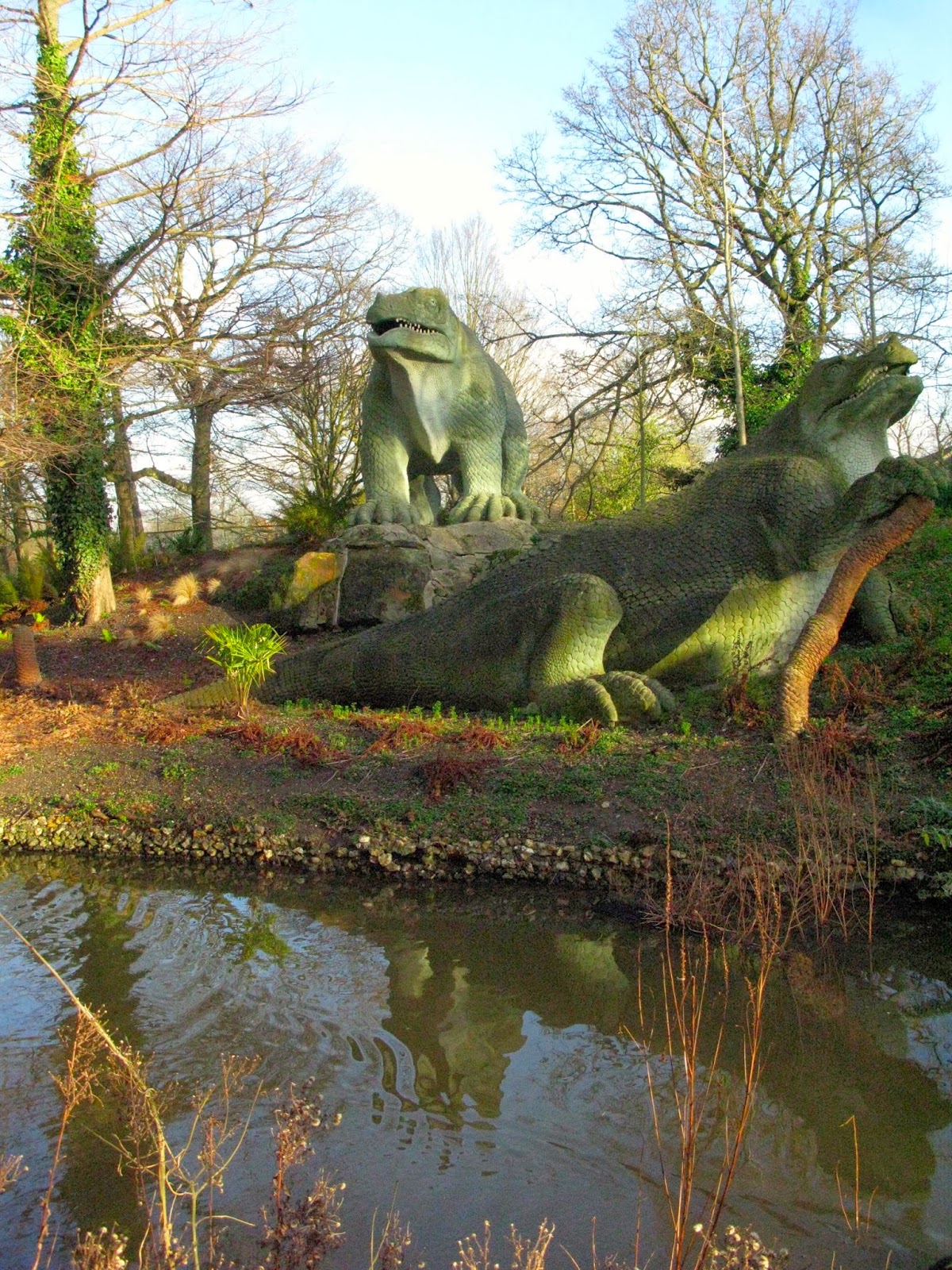My pal Hilary and I popped up to Crystal Palace on a recent sunny Saturday. With 200 acres of parkland, there's plenty to see and do. We also enjoyed a reappraisal of the National Sports Centre, looking its best in the bright spring sunshine. It was designed by LCC Architects Department in 1964 and is now Grade ll listed.
 |
| The wall of windows lets light in to the pool |
Wandering into the grounds we encountered a sculpture of a gorilla by David Wynne, created in 1961. It's a likeness of one of London Zoo's most famous residents, Guy the Gorilla, whose death in 1978 made the national news. The work a curvaceous one by the artist, who went on to human models, the Beatles and the Queen among them.
 |
| Bottoms up |
A little further on, arranged artfully around a small lake is a group of life size prehistoric creatures. Originally planned to be part of a theme park, around the time as the Great Exhibition, the group was conceived in 1852 by Professor Richard Owen. He enlisted renowned animal sculptor Benhamin Waterhouse-Hawkins to create the models using fossils from the Natural History Museum for inspiration. It was a Victorian vision of what was roaming the earth at one time and resulting Mosasaurus, Megalosaurus and Teleosaurus pre-dated Charles Darwin. It was the very dawning of palaeontology and the first public exposition of the theory that such animals did exist millions of years ago.
 |
Jurassic park
|
 |
| Jurassic lassies |
Continuing our loop we took a tour of the Crystal Palace farm, an urban haven to pot-bellied pigs, long, curly horned sheep, tiny Shetland ponies and a couple of llamas that looked as if they were well into their production cycle for a few dozen woolly jumpers.
Behind the doors of a rectangular shed we found a small aquarium with turtles and a couple of milky opaque creatures decorated with fuscia-pink gills.
 |
| Walk this way |
 |
Feeding time
|
 |
Need some ram?
|
Beyond the athletics track we arrived at the Station Cafe, for frothy coffee and shimmering cup cakes. If not for the four-year-old boys wrestling under the table next to us, it would have been a calm and cosy bolthole.
 |
| Cake o'clock |
 |
Steamy windows
|
We supped up and moved on, walking the circuit of the sphinxes – part of the original Crystal Palace cast-iron and plate-glass structure when it was relocated to Penge following the 1851 Great Exhibition and gave the area its name. A fire destroyed much of it in 1936 and all that is left are the stone foundations and cellars, guarded by these serene looking fellows. And, of course, it gave the area its name.
 |
| Stoney silence |
Leaving the park, we passed underneath one of the Crystal Palace radio towers and at this close range it was as impressive as Paris's Eiffel. More colourful certainly, as it's constructed using red steel girders. A useful landmark, too. A south east Londoner can always get her bearings by looking for these towering beacons.
 |
| Tower and moon rising |










